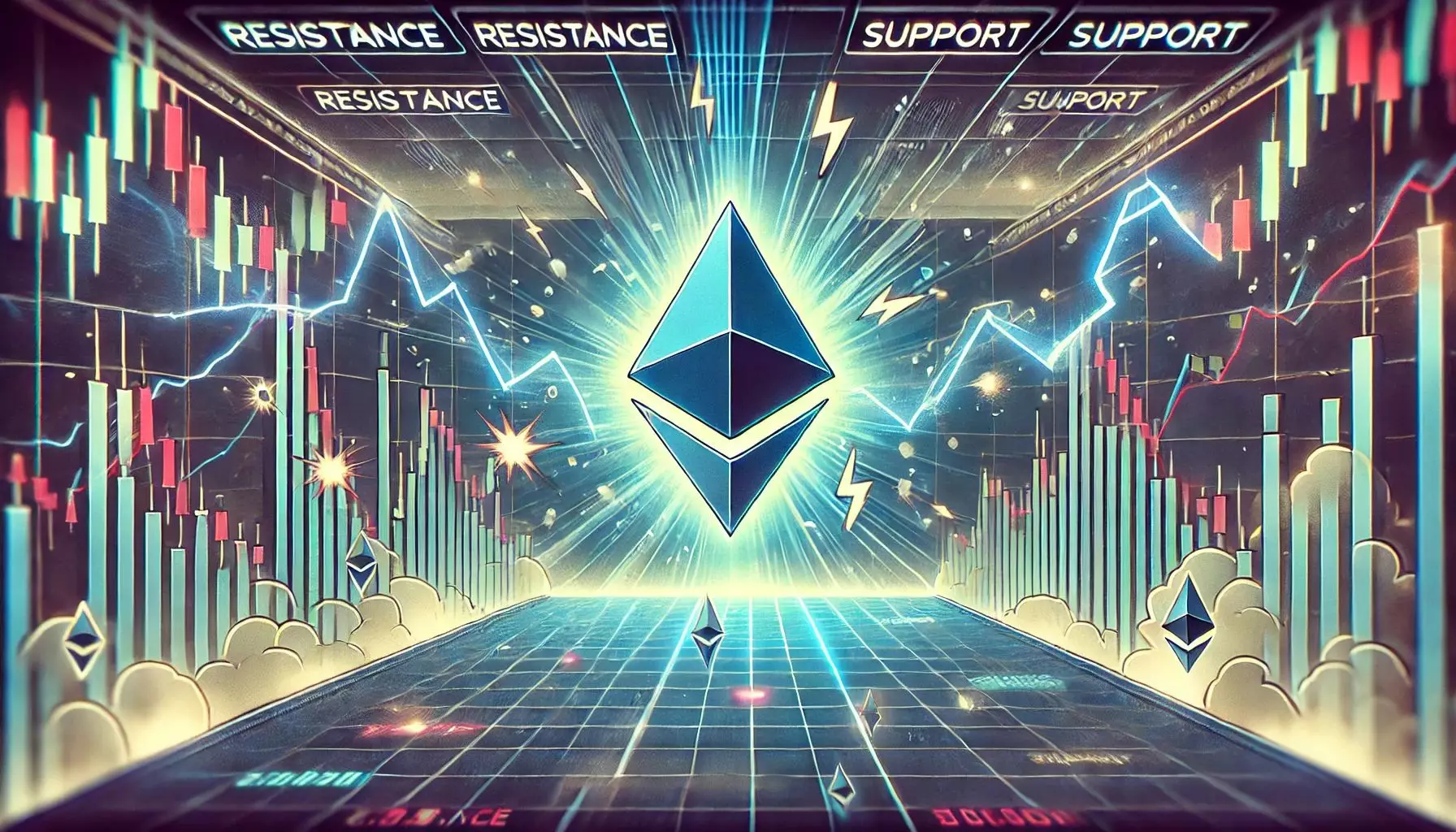The world of cryptocurrencies has never shied away from chaos. With fluctuating volatility, digital currencies bounce around like ping pong balls in a hurricane, leaving investors and traders alike perpetually on the edge. At the center of this storm is Ethereum (ETH), which is currently navigating a tumultuous sea as it fights to break above resistance levels that have proven more formidable than anticipated. This isn’t merely a financial story; it’s a social commentary on the risks and rewards inherent in the decentralized economic revolution and why a comprehensive understanding of the landscape is essential for anyone looking to venture into this arena.
Resistance and Support: The Tug of War Over $2,800
At present, Ethereum’s price remains glued above the $2,500 mark, but this stability belies the underlying struggle playing out beneath the surface. In recent weeks, ETH stumbled against a daunting supply wall hovering just below $2,800, akin to a weary boxer who has landed a few hits yet can’t seem to secure a knockout. This scenario is a testament to both consumer sentiment and market structure, as traders grapple with the uncertainty of bullish momentum that fizzles out every time it approaches key resistance levels.
The notion of resistance doesn’t merely exist on paper; it plays a pivotal role in shaping investor behavior. A failure to surpass the $2,800 mark could create a self-fulfilling prophecy where fear drives hesitant investors to pull back, pushing the price toward the immediate support level around $2,400. When confidence dwindles, the market can descend into a cycle of pessimism, making it challenging for ETH to regain its footing.
Analysts’ Divergent Views: Navigating the Gray Areas
While some analysts exude optimism at the thought of an imminent altseason, others are quick to sound alarms, emphasizing the need for a consolidated strategy among investors. Daan, a prominent industry expert, paints a volatile landscape, describing price action as “messy,” which could act as a cautionary tale rather than a cause for celebration. He underscores the necessity of breaking through the current trading range to instill newfound confidence in the market.
This perspective indicates that Ethereum, much like its peers in the crypto space, is entrenched in a delicate phase where any slip could ripple beyond mere price adjustments. The indecisiveness in movement reflects not only the technical aspects of trading but also the psychological factors influencing investor decisions. A decisive breakout above the $2,800 level is crucial; it has the potential to change the narrative and offer traders much-needed clarity.
The Psychological Battleground: Traders vs. Market Sentiment
Trading is as much about psychology as it is about calculations. The current market’s tight range, trapped between $2,100 and $2,800, presents a battleground where bulls and bears engage in a silent war over sentiment. While the bullish structure holds strong for now, the lurking specter of a bearish pullback looms, particularly if general caution leads to a retreat below the $2,500 level.
Such back-and-forth oscillations can paralyze even the most determined investors, making them question their strategies and emotional resilience. The pressure to act—whether to buy, sell, or hold—creates a breeding ground for panic-based decisions that could ultimately exacerbate existing market tensions. The psychological impact of such volatile swings should not be underestimated, as they hinge on human emotion more than empirical data at times.
The Role of Institutional Players: Shaping Market Dynamics
As Ethereum grapples with these challenges, it is crucial to consider the influence of institutional investment in the crypto market. Increasing interest from traditional financial players adds layers of complexity to Ethereum’s price movement. With institutional money flowing in, there’s potential for greater stability—but also for significant volatility when these players decide to withdraw or shift their focus elsewhere.
The involvement of institutional investors suggests a shifting paradigm in how cryptocurrencies are treated—moving from speculative assets to more established financial instruments. However, the ambiguity of their motivations can lead to unpredictable impacts on retail traders, who often lack the deep liquidity and strategic foresight of institutional actors. This complicates the dynamics further, leaving retail investors at the mercy of broader market strategies that may not align with their immediate interests.
A Call for Caution: What Lies Ahead
As Ethereum hovers around the $2,539 mark, it’s a reminder that while technological advancements underpinning cryptocurrencies offer great promise, they are also fraught with immense risk. Until a clear breakout or breakdown occurs, traders should brace for a rollercoaster ride fraught with emotional highs and lows. The next steps will be revealing—not just for Ethereum, but for the broader narrative surrounding cryptocurrencies themselves as they continue their march toward mainstream acceptance or facing further relegation to speculative obscurity. Understanding that volatility is inherent within this space will empower investors to navigate these turbulent waters more effectively.


Leave a Reply